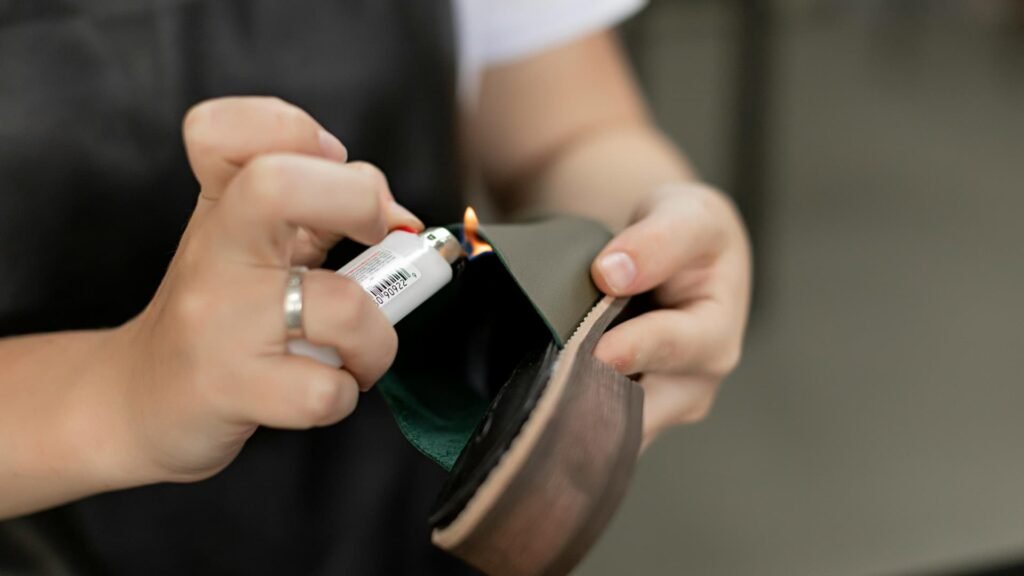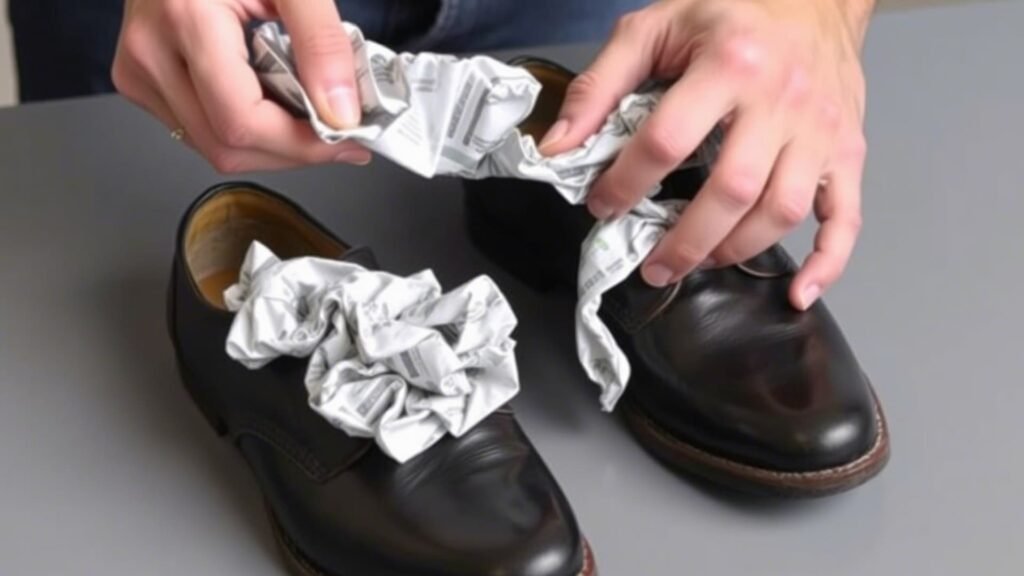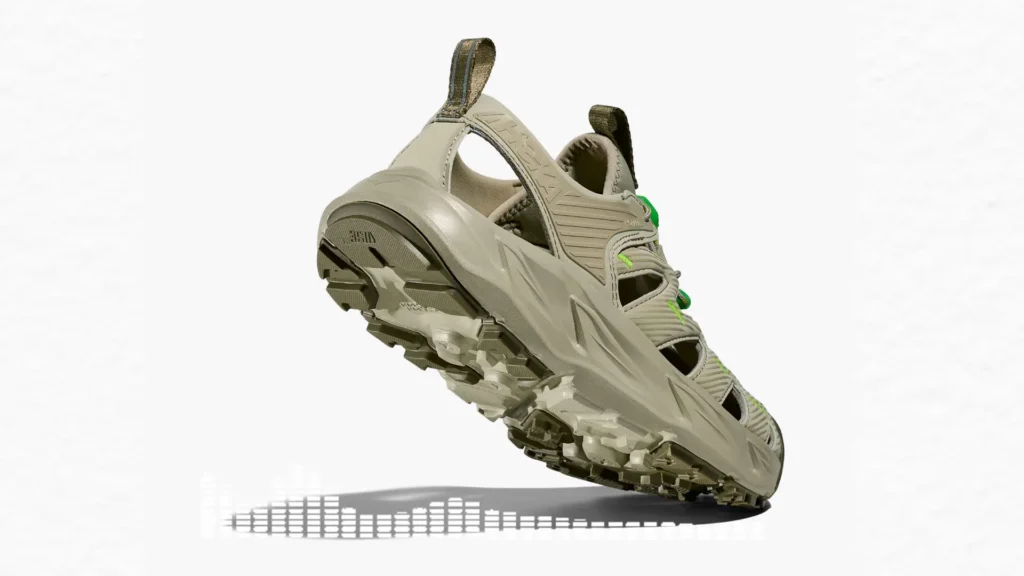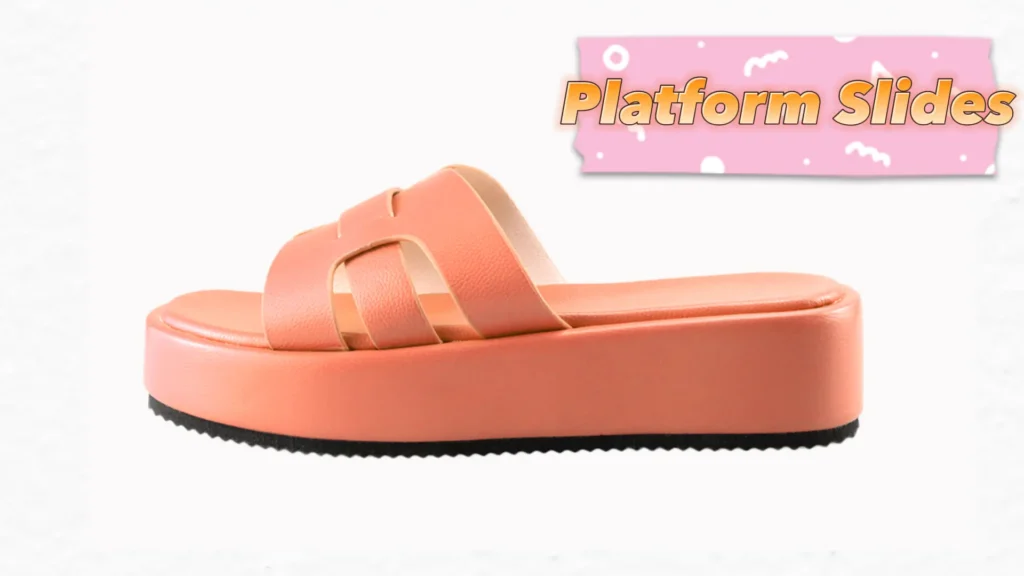There’s nothing worse than slipping into a pair of shoes you love, only to realize they pinch your toes or squeeze your heels. Tight shoes can turn a good day into a painful one. Fortunately, you don’t have to suffer. With a few simple techniques, you can stretch those shoes to fit comfortably. Here’s a guide to the best methods for stretching tight shoes at home.
How to Stretch Your tight Shoes
Wear Them Around the House
One of the easiest ways to stretch shoes is to break them in gradually. This method doesn’t require any special tools or products. The idea behind this technique is simple: by wearing the shoes consistently in a controlled environment. Wearing shoes at home, you allow your feet to naturally mold the material over time.
To get started, put on a pair of thick socks before slipping into the tight shoes. The added bulk from the socks helps create extra pressure against the shoe’s interior. This forces the material to expand slightly with each step you take.
Walk around your house, go about your daily chores, and simply sit and move your feet occasionally to simulate the normal wear-and-tear.
This process works best for leather, and canvas. These materials tend to soften and adapt more easily than rigid synthetics.
However, patience is key here—this method won’t provide immediate results. It may take several days or even weeks of consistent wear to notice a significant difference in fit.
If the shoes feel particularly uncomfortable at first, limit your wear time to 30 minutes to an hour per session.
The benefit is that, this approach is low-risk. It doesn’t involve water, heat, or chemicals. Plus, it allows you to test how the shoes feel during everyday movement. By the end of the process, you’ll likely find that the shoes have stretched just enough to provide a comfortable fit.
Use a Shoe Stretcher
If you’re looking for a more precise way to stretch tight shoes, investing in a shoe stretcher is a great option.
Shoe stretchers are designed to expand the dimensions of shoes, whether they need to be lengthened, widened, or both. These tools are typically made of wood or plastic and come in different styles.
There are two main types of shoe stretchers: one-way stretchers, which focus on either length or width, and two-way stretchers, which can adjust both simultaneously.
To use a shoe stretcher, simply insert it into the shoe and turn the adjustment knob until the stretener applies gentle but firm pressure against the inner surface of the shoe. Leave the stretcher in place for several hours. This allows the shoe material to slowly expand.
For particularly stubborn areas, you can use stretching plugs or bumps. These small pieces slide onto the stretcher and target specific zones where extra room is needed. For example, if the ball of your foot feels cramped, position a plug near that area to ensure localized stretching.
This method is effective for leather and suede. Synthetic materials may also benefit, though the results might not be as dramatic due to their less malleable nature.
One advantage of using a shoe stretcher is that it gives you complete control over how much stretching occurs.
While purchasing a shoe stretcher involves an upfront cost, it’s a worthwhile investment if you frequently encounter sizing issues or own multiple pairs of tight-fitting shoes.
The Freezer Trick
The freezer trick is an inexpensive DIY hack that leverages the natural properties of water to stretch tight shoes. When water freezes, it expands, and creates gentle outward pressure that forces the shoe to expand along with it.
Here’s how to perform the freezer trick step-by-step:
Prepare the Bags: Fill two resealable plastic bags halfway with water. Make sure the bags are sturdy enough to prevent leaks, and seal them tightly to avoid spills.
Insert the Bags: Place one bag inside each shoe. Ensure the water fills the tight areas. Push the bags down firmly so they conform to the shape of the shoe.
Freeze Overnight: Put the shoes in the freezer and leave them there for several hours. As the water freezes, it will expand, and apply uniform pressure to the shoe’s interior.
Thaw and Remove: Once the ice has melted, remove the bags from the shoes. Wipe away any residual moisture with a dry cloth and inspect the shoes for signs of stretching.
This method works exceptionally well for canvas, leather, and synthetic fabrics. However, it’s important to avoid using this technique on suede or patent leather.
One benefit of the freezer trick is its simplicity. It requires no specialized equipment beyond what you already have at home. It’s also relatively quick, yielding noticeable results after just one attempt.
That said, you may need to repeat the process if the initial round of stretching isn’t sufficient.
Overall, the freezer trick is a creative solution for stretching the tight shoes without spending money on tools or professional services.
Heat Things Up

Heat is a powerful tool when it comes to stretching shoes. It works well on leather, synthetic fabrics, and canvas. The warmth softens the fibers, and makes them pliable and easier to mold to your foot shape.
To use heat to stretch your tight shoes, start by putting on a thick pair of socks to create extra bulk. Then, slip into the tight shoes.
Next, grab a hairdryer and set it to medium or low heat. Avoid high heat to prevent damaging the material.
Hold the hairdryer about 6-8 inches away from the shoe. Focus the warm air on the tight spots for 20-30 seconds at a time. While applying heat, wiggle your toes, flex your feet, and gently press against the shoe’s interior to encourage expansion.
It’s important to keep the hairdryer moving to distribute the heat evenly. Avoid overheating any one area. This could cause warping, discoloration, and damage to delicate finishes.
Once you’ve heated the desired areas, leave the shoes on until they cool down completely. As the material cools, it will retain the new shape molded by your feet.
Repeat this process as needed. Be cautious if your shoes have decorative elements, glue-heavy construction, or delicate finishes.
Excessive heat can melt adhesives and harm certain materials. Always test a small area first. With patience and care, this method can yield excellent results.
Alcohol Spray Solution
Alcohol spray solution is another way to stretch shoes. You can use them on leather, suede, and fabric shoes.
Rubbing alcohol works by breaking down the fibers in these materials, temporarily softening them so they can be reshaped. When combined with water, the solution becomes safe enough to use.
To make the spray, mix equal parts rubbing alcohol (70% or higher) and water in a spray bottle. Shake the bottle well to combine the ingredients. Lightly mist the tight areas of the shoes, both inside and out, until the material feels damp.
Be careful not to oversaturate the shoes. Too much moisture can weaken the structure or alter the color of certain materials.
Once the shoes are damp, put on a pair of thick socks and wear the shoes immediately. Walk around or flex your feet while the material dries. The alcohol will help the material relax and conform to the shape of your feet as it evaporates.
For best results, repeat the process a few times if necessary. Allow the shoes to dry completely between applications.
Before using this method, test the solution on a small part of the shoe to ensure it won’t discolor or damage the finish. This technique is ideal for leather and suede. It may not work as effectively on heavily treated synthetics and waterproof fabrics.
Stuff Them with Newspaper
If you’re looking for a no-effort method to stretch your shoes, stuffing them with damp newspaper is an excellent way. This technique is gentle and works well for most materials. It’s also a great choice if you don’t want to risk damaging your shoes with heat and chemicals.
Start by crumpling up sheets of newspaper into loose balls. Lightly dampen the paper. Make it slightly moist, not dripping wet.
Avoid soaking the paper. Excessive moisture can harm the shoe’s structure. Once the paper is ready, pack it tightly into the shoe. Focus on toe box and sides.
Leave the stuffed shoes to sit overnight or let the newspaper dry completely. As the paper dries, it expands slightly, and gently pushes outward against the shoe’s interior. This process stretches the shoes.
Once the paper is dry, remove it and check the fit. If the shoes still feel tight, repeat the process with fresh damp newspaper.
This method is slower than others. But it’s one of the safest and least invasive. It’s particularly useful for preserving the integrity of delicate materials and intricate designs. Plus, it requires no special tools.
Visit a Professional
When all else fails—or if you’re dealing with expensive hard-to-stretch shoes—it’s time to call in the experts. A professional cobbler or a shoe repair shop has access to industrial-grade tools and years of experience. They can help you stretch your shoes safely.
Professionals use specialized shoe stretchers. These tools are useful to apply precise pressure to expand the shoe without damaging its structure. These machines can target toe box, heel, and width effectively.
Cobblers can provide a customized fit tailored to your needs. Some cobblers offer stretching sprays to enhance the process further.
One major advantage of visiting a professional is their ability to handle tricky materials. Patent leather, suede, and exotic skins require special care.
They can also address complex issues, like uneven sizing and structural problems, that DIY methods might not resolve. While this option does come with a cost, it’s worth the investment for high-end shoes.
Before heading to the cobbler, inquire about pricing and turnaround times to ensure the service fits your budget and schedule.
How to Tell If Your Shoes Are Too Tight
How do you know if your shoes are actually too tight? If they just need a little breaking in? Your feet give you clear signals when the fit isn’t right. Here’s how to spot the signs and decide if it’s time to stretch those shoes.
Pinching or Squeezing Sensation: If you notice a constant pressure around your forefoot, sides, or heels, your shoes might be too tight. This pinching can feel like the shoe is hugging your foot a little too aggressively. A proper fit should feel snug but not restrictive.
Pain or Discomfort: Achy toes, sore heels, and a burning sensation are red flags. Pain is your body’s way of saying something’s off. If your feet hurt after just a few minutes of wearing the shoes, the shoes are likely too small for your foot shape.
Blisters and Red Marks: Check your feet after taking the shoes off. Blisters, red spots, and irritated patches mean the shoes are rubbing too much. Tight shoes cause friction that leads to these telltale marks.
Numbness or Tingling: If your foot feels numb, tingly, or asleep while wearing the shoes, it’s a sign of restricted blood flow. Tight shoes compress nerves and blood vessels. This shouldn’t happen in a well-fitting pair.
Toes Hitting the End: Stand up and wiggle your toes. If they’re pressing against the front of the shoe, your shoes are too short or narrow. You should have about a thumb’s width of space between your longest toe and the end of the shoe for proper movement.
Difficulty Walking Naturally: Pay attention to your gait. If you’re hobbling, limping, or adjusting your stride because the shoes feel stiff, they’re likely too tight. Shoes that fit well let you walk smoothly without forcing your feet into awkward positions.
Bulging or Overhanging Feet: Look down at your shoes. Are your toes or the sides of your feet spilling over the edges of the sole? Does the material look strained, with visible stretching or bulging? This is a visual clue that your shoes are too small for your foot width.
Tightness That Doesn’t Ease Up: New shoes often feel snug at first. But if you’ve worn them several times and they still feel as tight as day one, then they’re not adapting to your feet. A good pair should gradually mold to your shape with wear.
If you notice one or more of these signs, your shoes are probably too tight. You can try stretching them using methods mentioned above.




